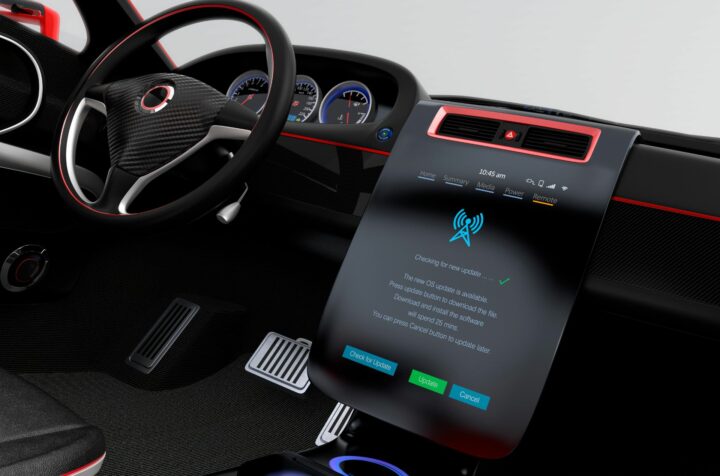Today’s manufacturing industry is smart, connected, resilient, and agile. It’s also highly competitive and undergoing a range of challenges – from supply chain fragility, worker shortages, sustainability, and the need to meet ever-stringent ESG (environmental, social, and governance) goals.
This is seeing manufacturers create new and innovative ways to do business that are as much about providing services as they are about developing products. It’s no surprise that smart manufacturing is proving essential when it comes to optimizing productivity, quality, and safety, and enabling product customization.
The ability to use digital solutions (including robotics, artificial intelligence, and machine learning) to optimize operations delivers a clear competitive advantage.
All of this is leading many traditional businesses to become digital adaptive organizations that are fully embracing technologies including the Industrial Internet of Things (IoT), 5G, cloud and edge computing, and much more.
Ultimately, this is resulting in the ability to truly streamline processes, improve efficiencies, be far more agile to quickly respond to changing conditions, develop innovative products, and provide a range of services to better meet ever-changing customer expectations.
Being fit for purpose no longer means making a product that’s good enough, it means making highly bespoke and personalized solutions that fit any number of needs and wants.
Let’s take a closer look at what’s bringing all of this together!
Resiliency and innovation built from data
Whether you’re developing an app that lets workers control specific machines in your production line, IoT devices, or any manner of smart connected devices, it’s their ability to collect vast amounts of data that is game-changing. Through the use of automation, AI, and such connected technologies, big data, and the use of big data analytics, are helping to improve operational efficiencies, better analyze risks, optimize supply chains, and power predictive maintenance (which is likely to transform from predictive into real-time preventative maintenance).
It is also being heavily incorporated into enterprise resource planning systems which, as noted in Fortune Business Insights, are supporting the transformation of “… outdated manufacturing facilities into highly automated and efficient powerhouses.” Basically, built-in resiliency.
IoT devices, in particular, are leading the way when it comes to innovation, changing operational processes, and the creation of smart factories. IoT is fundamental in the sharing of information to enable real-time data-driven decision-making. This helps to create high levels of adaptability, more efficient production, smarter material use, the ability to optimize the flow of goods, provide mass customization, and more. All of which is driven by the data that is collected and analyzed.
Without this data and IoT connectivity, predictive maintenance, remote monitoring and control, asset tracking, and logistics management (as just a few examples) would not be anywhere as efficient and automatic.
Such complexity, however, requires ongoing and robust IoT testing that includes both IoT software testing and IoT device testing.
Change-ready processes and digital technologies
Whether you’re manufacturing textiles, machinery, chemicals, or pharmaceuticals, (anything really) the ability to quickly react to changing conditions, regulations, and customer expectations is vital. Especially as more businesses ramp up their digital transformations.
What everyone thought was essential for their app today, won’t be tomorrow. Sure, your IoT testing caught a few issues with your device’s sensors but how fast can you make changes to the device – and will it still work seamlessly with your software?
The need to deal with all forms of uncertainty efficiently and effectively is seeing today’s industry become highly adaptive, more responsive, and resilient. Particularly through the use of real-time analytics and flexible, digitally-driven processes – with many leaders using a Digital Twin to ensure key processes function correctly and can handle any level of disruption. Such virtual models enable processes to be optimized and rapidly changed before any problem can occur.
Again, data is key. But is your data governance process up to the task? As Gartner notes, an adaptive approach to data and analytics governance “enables flexible and nimble decision-making processes that help an organization respond quickly to opportunities, while continuously addressing investments, risk and value.”
Crowdtesting IoT connectivity and smart devices
Discover why your connected devices must be secure and compatible to stay one step ahead of the competition.
Find out moreSmart everything and changing customer expectations
Placing an ‘i’ before everything is quickly being replaced by the word ‘smart’.
Smart homes, smart cars, smart cities, smart hospitals, smartphones, and even smart wearables (including watches, wristbands, rings, glasses, clothes, and more).
A smart device can be easily programmed via an intuitive user interface, a smart connected device is (usually remotely) controlled via one or more connections (Bluetooth, Wi-Fi, etc.) using apps or voice controls, and then (of course) there’s IoT connectivity. And all help deliver the all-important high-quality (and reliable) data that is driving the (r)evolution towards Industry 4.0.
Importantly, such digital technologies are helping to create highly adaptive, ‘smart’ organizations. But, as noted in a recent Fujitsu report ‘The great data acceleration’, “Businesses need to speed up their data use” and “the complex nature of manufacturing operations and supply chains makes a robust data approach critical”.
Especially when it comes to meeting changing expectations. “According to Fujitsu’s research into Enterprise Adaptability, 41% of leaders say their customers’ needs are changing within weeks at a time, but only 41% say they are only sometimes, rarely or even never able to keep up with those changing needs.”
Put simply, everyone must get smarter about how they use data and the optimal way to meet those ever-changing needs.
Built-in flexibility that lets your business take flight
Whether you’re looking to reduce costs, minimize supply chain disruptions, deal with skilled worker shortages, mitigate risks, and/or develop bespoke, flexible solutions, digital technologies combined with big data and analytics are indispensable.
But this requires that every solution works exactly as intended at all times in any location. Seamlessly and reliably. This requires skilled workers, training, IoT testing, and a customer-focused and change-ready mindset.
If the future of manufacturing is digital and connected, everything from your purpose-designed networks, your smart devices and software, and your physical operations must be truly fit for purpose.








